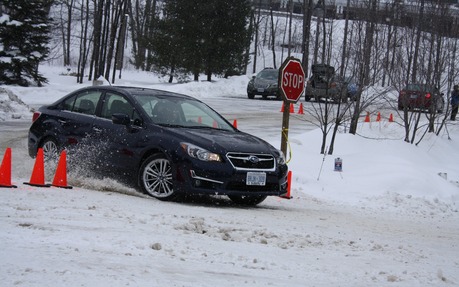Anti-Lock Brakes: Are They Any Good in Winter?
If your vehicle is even remotely recent, it probably has an anti-lock braking system (ABS).
Professional drivers have differing opinions on ABSs, to the point that very few sports cars feature these systems. And yet, they play an essential role in our everyday driving. So how exactly do they work?
In case of emergency, most people tend to press the brake pedal really hard. Back in the day, with assisted braking, this could literally cause the wheels to lock. And once that happened, it became impossible to change the vehicle’s direction. In other words, you ran the risk of ploughing straight into whatever you were trying to avoid.
Anti-lock brakes detect when one or more wheels are locked by the driver. Then, using a sophisticated pump, the system alternates very quickly between full braking and releasing, allowing the driver to correct the vehicle’s trajectory while continuing to brake.
When regular cars are driving in a straight line, ABS brakes can also reduce braking distances compared to what they would be with locked wheels.
But how well does this technology work in winter? On snow and ice, traction is so poor that wheels are locked as soon as you tap the brake pedal, as there is no asphalt exerting force on the rubber.
It’s actually an interesting debate. Some people are convinced that ABS systems are very useful in snowy conditions because they allow drivers to control the vehicle’s trajectory. But even then, the snow that accumulates in front of the locked wheels also helps stop the car.
At the end of the day, the way ABS brakes behave depends on how the manufacturer has configured them. Unfortunately, there’s no cut-and-dried answer to the initial question.
